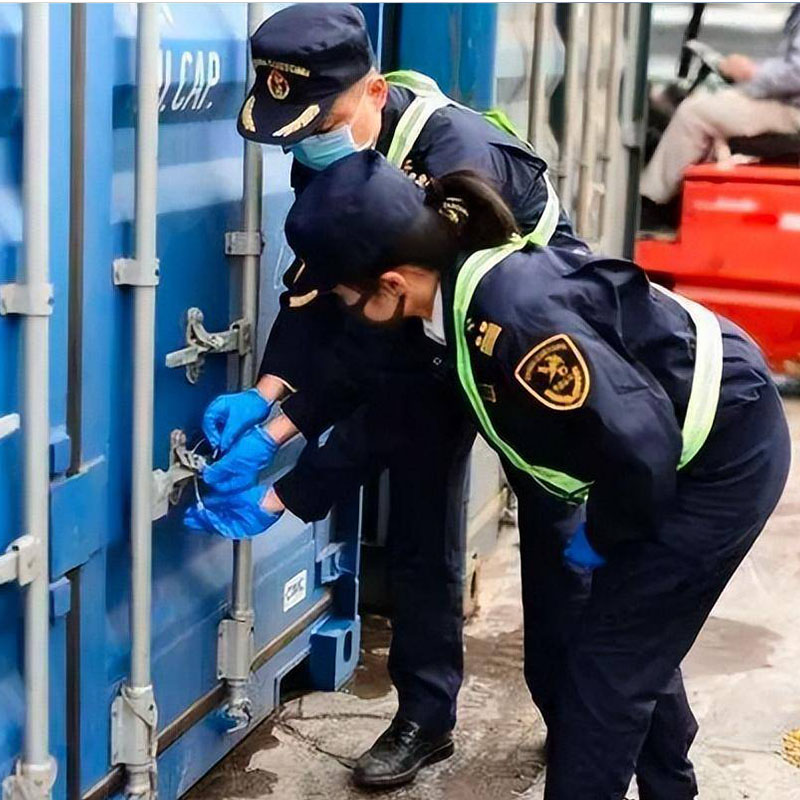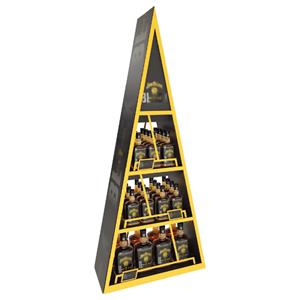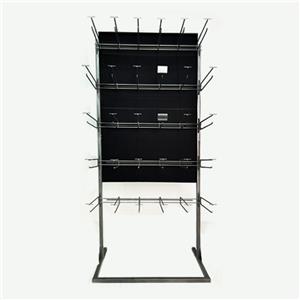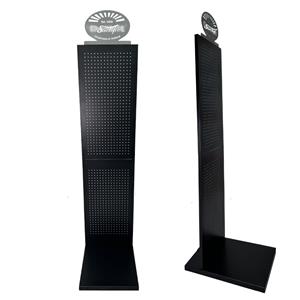Common Customs Clearance Issues in the Display Rack Industry: Q&A
Common Customs Clearance Issues in the Display Rack Industry: Q&A
Navigating customs clearance can be challenging, especially in the display rack industry. Whether dealing with metal display racks, wooden display racks, perforated board display rack or custom retail fixtures, understanding import/export regulations is crucial to avoid delays and additional costs. This Q&A addresses common customs clearance concerns and provides insights into key regulations.

1. Has the "Customs Clearance Certificate for Import/Export Goods" Been Canceled? Can Companies Still Apply for Paper Documentation?
🔹 Answer: Yes, the "Customs Clearance Certificate for Import/Export Goods" was officially canceled on June 1, 2018, as per Announcement No. 50 of 2018 by the General Administration of Customs. However, in certain cases, companies may still apply for paper documentation.
For Import Goods:
If imported animals, plants, or related products require transport certificates during transit, a paper "Notice of Goods Transfer for Imported Goods" can be issued.
For Export Goods:
In special cases, such as consolidated declarations or system failures, a paper "Inspection and Quarantine Work Contact Sheet for Export Goods" can be issued.
📌 Example:
If exporting wooden display racks containing dried reeds as decorative elements, fumigation of the entire batch is required. To ensure smooth customs clearance, the company must apply for an "Inspection and Quarantine Work Contact Sheet for Export Goods".

2. Are Import Duties Required for Returned Export Goods?
🔹 Answer: According to Article 55 of the Regulations on the Administration of Import and Export Duty Collection of the People’s Republic of China:
If exported goods are returned within one year due to quality or specification issues, and they remain in their original condition, they are exempt from import duties upon re-entry to China.
The company must submit relevant documents and certificates for customs verification during the re-import process.
📌 Important Considerations for Display Rack Exporters:
When exporting iron display racks, wooden display racks, or pegboard display racks, ensure compliance with the destination country's import standards to prevent returns.
If metal hooks or display fixtures are returned, the re-import process requires detailed documentation to avoid delays.
Key Takeaways for Display Rack Manufacturers
✅ Understand Export & Import Requirements: Whether exporting wooden display racks or metal shelving, ensure compliance with customs regulations to prevent unnecessary fees.
✅ Prepare for Fumigation & Quarantine: If your display racks contain organic materials, such as wood or plant-based elements, arrange fumigation in advance.
✅ Streamline Documentation: For returned goods or special export cases, always prepare the necessary customs documentation to avoid delays.
By staying informed and proactive, display rack manufacturers can navigate customs clearance smoothly, reducing risks and ensuring seamless global trade. 🚛🌍

🚀 Sintop Value: Ensuring Smooth Global Trade for Display Racks
At Sintop, we prioritize compliance, efficiency, and seamless logistics for our global partners. Our expertise in display rack manufacturing ensures that every shipment meets customs regulations, reducing risks and delays.
✅ Industry Expertise: We navigate fumigation, quarantine, and duty exemptions to support hassle-free exports.
✅ Quality Assurance: Our custom display racks, metal shelving, and retail fixtures are designed to meet international standards.
✅ Global Support: From documentation to logistics, we help businesses expand worldwide.
By staying ahead of customs clearance regulations, Sintop provides reliable and innovative display solutions for retailers worldwide. 🌍✨

Contact information
Website: www.sintopfixtures.com
Wechat/WhatsApp: +86 15980885084
Email: elly@xm-sintop.com
FAQ
1. What are store fixtures?
Store fixtures are essential equipment and furniture used in retail spaces to display, organize, and store merchandise. Examples include shelving units, racks, display cases, counters, and hooks.
2. Why are store fixtures important?
Store fixtures enhance the shopping experience by organizing products, improving accessibility, maximizing space, and creating appealing displays that attract customers and boost sales.
3. What types of store fixtures are commonly used?
Common types of store fixtures include:
Shelving Units(wall shelves, free-standing shelves, adjustable shelving)
Display Cases (glass cases, countertop cases)
Racks (clothing racks, display racks)
Counters (checkout counters, service counters)
Hooks and Pegboards
End Caps
Signage and Graphics
Mannequins
4. How do I choose the right store fixtures for my retail space?
Consider your merchandise type, store layout, and branding needs. Fixtures should be functional, complement your store's design, and fit within your budget. Evaluate your space to determine the best fixture types and configurations for optimal product presentation and customer flow.
5. Can store fixtures be customized?
Yes, many store fixtures can be customized to align with your store's branding and specific needs. Customization options include materials, colors, sizes, and designs. Collaborating with a fixture supplier or designer can help create fixtures that match your store’s style and functional requirements.
6. How can I maximize space with store fixtures?
Utilize fixtures that optimize vertical space, such as wall-mounted shelves and tall display racks. Modular and adjustable fixtures can adapt to changing merchandise or store layouts. Plan your store layout carefully to ensure efficient use of space and smooth customer flow.
7. How do I maintain store fixtures?
Regularly clean and inspect fixtures to ensure they remain in good condition. Check for wear and tear, and repair or replace damaged parts. Follow manufacturer guidelines for maintenance and cleaning to extend the lifespan of your fixtures.
8. Can store fixtures be used for different types of retail stores?
Yes, store fixtures can be adapted for various retail environments, including clothing stores, electronics shops, grocery stores, and more. The choice of fixtures depends on the specific needs and merchandise of the store.
9. How can store fixtures improve the customer experience?
Well-designed fixtures make products easy to find and browse, enhancing the overall shopping experience. Effective use of fixtures creates an organized, aesthetically pleasing environment that encourages customers to spend more time in the store.
10. Where can I purchase store fixtures?
Store fixtures can be purchased from specialized fixture suppliers, retail equipment stores, or custom fixture manufacturers. Online retailers and local suppliers also offer a wide range of options.




